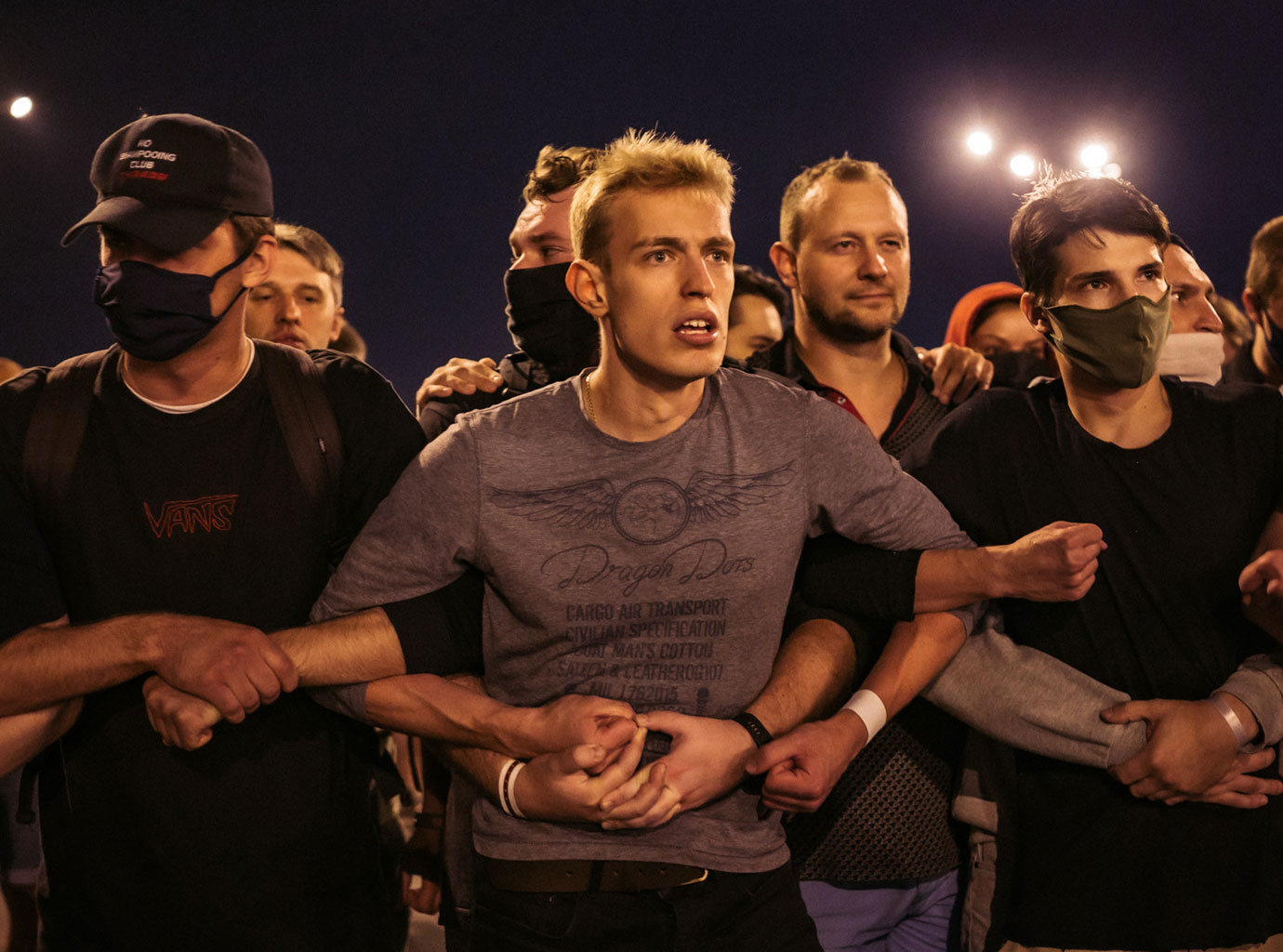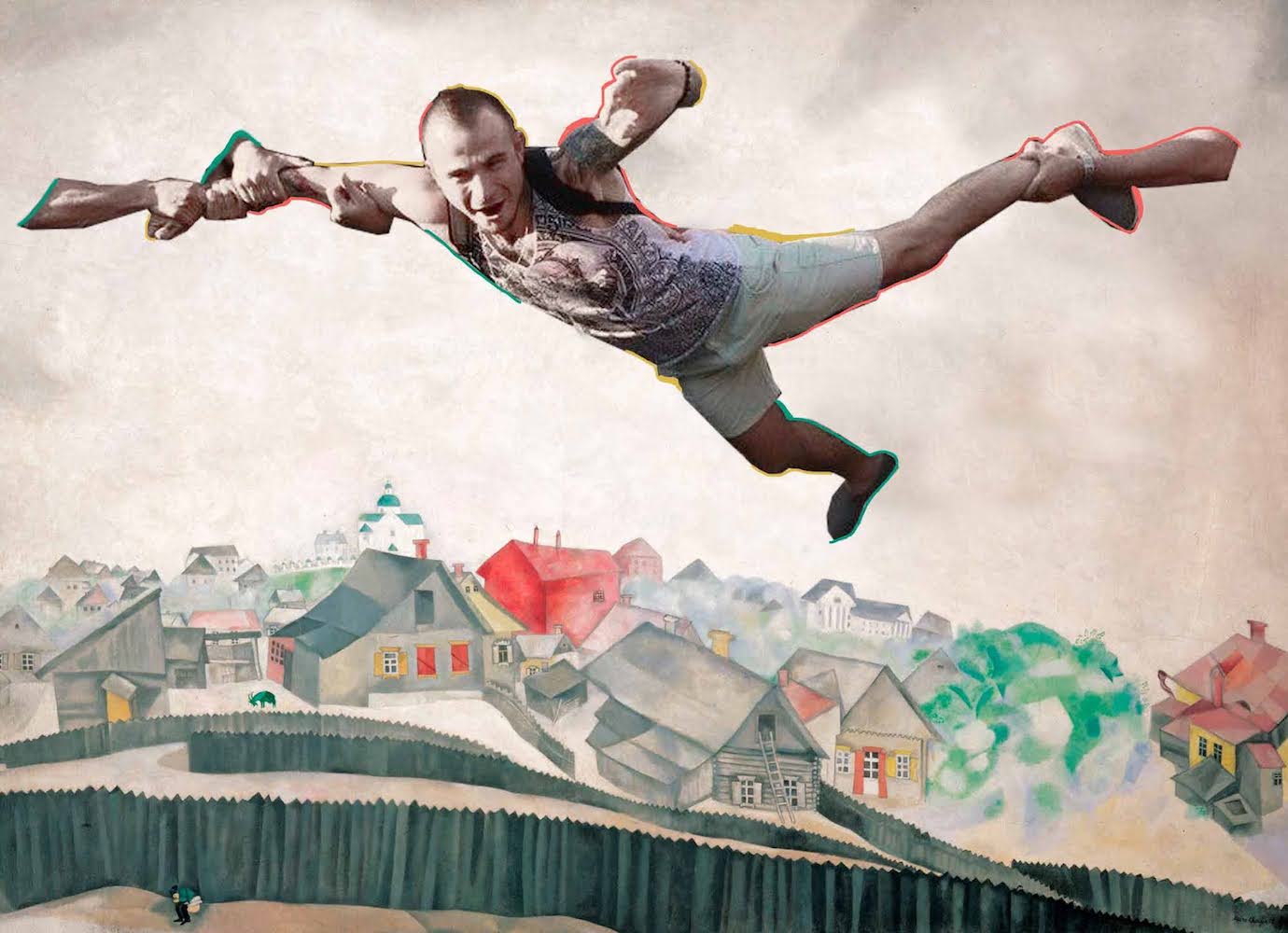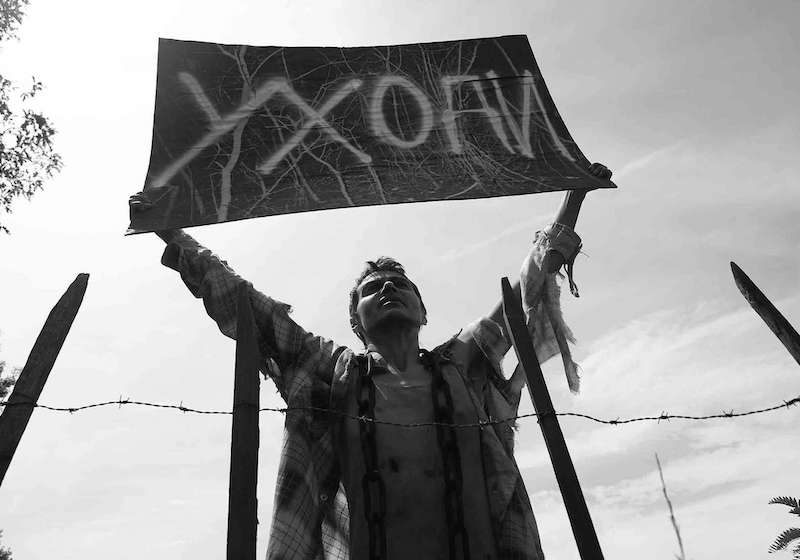Photographing Belarusians’ brutal fight for survival
It had been a very ordinary evening in August 2020 for Minsk-local Siergiey when he came face-to-face with the Belarusian security forces. “I had just come back from our summer cottage with my wife, and wanted to pick up some vinegar from the shop to make pickles. The street was closed, and I noticed riot police standing by the roadblock,” he later told documentary photographer Jędrzej Nowicki.
But Siergiey did not predict what would happen next. “I asked them the best way to get to the store, since they were blocking the way. They knocked me to the ground and started kicking me in the head. I was immediately covered in blood. After a few minutes, which felt like a lifetime, they told me to get up.” But Siergiey couldn’t move his legs. That’s when the officers attacked him again. “They started kicking me. I managed to crawl away, but they caught up with me. They beat me with batons across my back. It made them happy.” He was worried about his kids not knowing where he was and then seeing him in that state. “I don’t know how I got to the hospital,” he said. “Until then, I trusted the police.”
Siergiey, a former soldier who was caught and beaten by the OMON forces as he was walking to the shop on the second night of the protests (Aug. 16, 2020).
Since the country’s contested presidential elections last summer, Belarus has witnessed unprecedented violence against pro-democracy protesters, with rubber bullets, stun grenades, tear gas, and truncheons all widely used to dispel crowds. In the following months, state brutality has only escalated, with those caught up in the crackdown reporting beatings, torture, and threats of rape in detention centres across the country. The most widely disseminated photos from Belarus have become close-ups of the beaten and bruised bodies of detainees. Taken by the protesters, these viral images appeared on placards, and were plastered on city streets in an attempt to hold the government accountable for its crimes. Jędrzej Nowicki’s series The Scars, shot last year in Minsk throughout the month of August, shows similar injuries. With a deft precision, his work documents the very real, physical cost of survival in an authoritarian state. One image shows volunteer doctors treating a man released from custody whose body is almost entirely black and blue.
Daria had joined the protests on 11 August with her colleagues. “We had left work to see what the protests looked like,” she told Nowicki. But soon after they had set off, an undercover van of riot police cut in front of them, forcing the group to stop. Daria spent five days in custody, locked up with 40 women in a tiny cell designed for only five.
Volunteer doctors set up emergency medical aid points for people released from custody.
“We were all beaten at the police station. The worst thing I experienced when I was detained was the so-called ‘stairs of death’. Detainees were made to climb up to the third or fourth floor, and would be attacked on every second step. They beat the men especially. As for the women, we were mostly insulted: they called us sluts and threatened to rape us.”
Siergiey and Daria are among several Belarusians who spoke to Nowicki over the course of shooting The Scars, which he produced with the help of journalist Wiktoria Bieliaszyn. “The series was taken over one month of 2020. Just after I got back to Poland, the borders to Belarus were closed to foreigners and remain that way even now.”
For nearly a decade, Nowicki has been working for Gazeta Wyborcza, the biggest newspaper in Poland, covering politics and social unrest at home, as well as reporting abroad on the environment and the refugee crisis in Europe and the Middle East. The photographer previously worked in Belarus in 2016, covering a story on Chechen refugees stuck on the Polish-Belarusian border. “As a photojournalist, you’re required to think fast under pressure,” he told The Calvert Journal. “But it gives you no time to create bonds with your protagonists, which in my opinion is necessary to tell meaningful stories.” The Scars is his first documentary project, one he plans to continue with existing and new protagonists.
Daria was held in Belarusian custody for five days. The guards nicknamed her Rose, from the colour of the jacket she was wearing on the day of her arrest.
For now, Nowicki hopes the world doesn’t lose sight of the human rights crisis in Belarus. Nearly a year since Belarus’ pro-democracy demonstrations, international media attention of the ongoing protest movement has waxed and waned, largely fading until Belarusian President Alexander Lukashenko’s daring bid to intercept a civilian plane and kidnap opposition journalist Roman Rrotasevich, along with his fiancé, Sofia Sapega, on 23 May.
“Belarus is now in 158th place on World Press Freedom Index. The internet can be cut off any moment. Leading news websites are blocked. The print media are censored and access to information is restricted. Working in Belarus as a photographer or videographer from the EU is dangerous but it doesn’t compare to what local journalists experience. It has been this way since the beginning of the protests,” he says. “We should support independent media in Belarus. It’s their stories that we should listen to.”
Police officers from OMON units stand on the bridge in Maksima Bahdanovic street in the early hours of mass protests. This was the site of the first clash between the protesters and police on 9 August.
Red and white flowers and ribbons have become a symbol of the Belarusian protests. This bouquet was photographed near an arrest on Okrestina street in Minsk.
A woman kneels in front a line of special forces protecting the residence of Belarusian President Alexander Lukashenko. Thousands of protestants marched through the streets of Minsk heading towards the presidential quarters on the outskirts of the capital.
Artiom was arrested by the Belarusian militia as he was walking home with a friend on the second night of the protests.
Soldiers pictured standing in front of the Minsk Hero City Obelisk in Minsk. Young soldiers have been enlisted into Lukashenko’s campaign of terror, many without prior training.
One of the protesters brandishes a flare on top of a city bus on 10 August, minutes before special forces intervened with violence. The events of that night are considered some of the most brutal in the history the unrest in Belarus. It was here that Alexander Taraikovsky lost his life. He was the first victim of this protest movement.
Friends of Nikita Krivtsov carry his coffin in Molodechno. Hundreds of people marched through the streets of Molodechno at the time of his funeral. Krivtsov was missing for 10 days after last being seen on 12 August at the protests in the Belarusian capital city of Minsk. His body was found hanged in the forest on the outskirts of the capital. Police said there was no evidence of foul play, indicating it was a suicide. But people are deeply skeptical, believing Krivtsov was killed by the state forces during his detention.
Protesters create a “chain of light” outside Pushkinskaya metro station on 10 August.
A boy hugs his sister after his release from a detention centre on Okrestina street. Here, protesters detained by the security services were beaten and tortured.
Mourners stand in front of a funeral home in the centre of Minsk.
A flower photographed in a city fountain near the Minsk Hero City Obelisk during one of the biggest protests in August, which gathered tens of thousands of people in the centre of Minsk.


